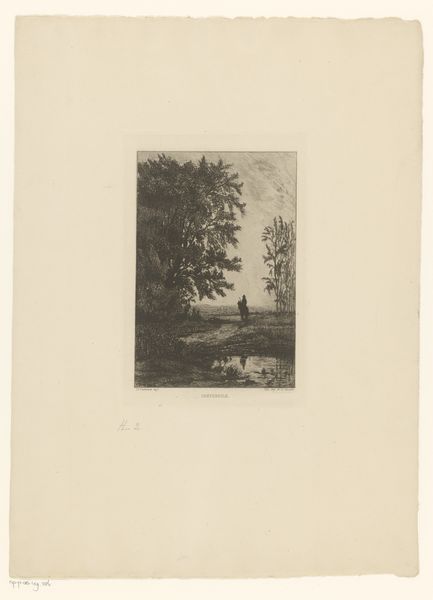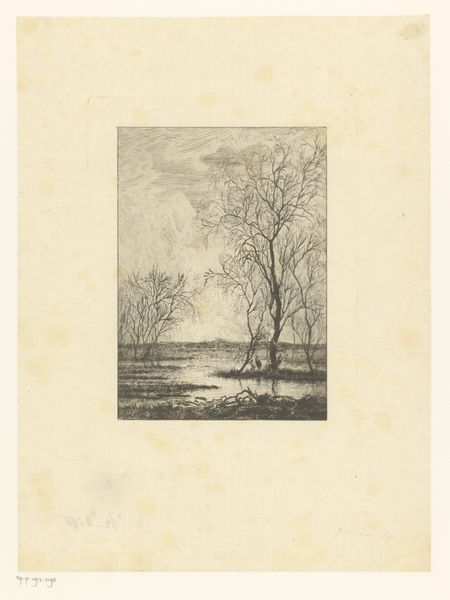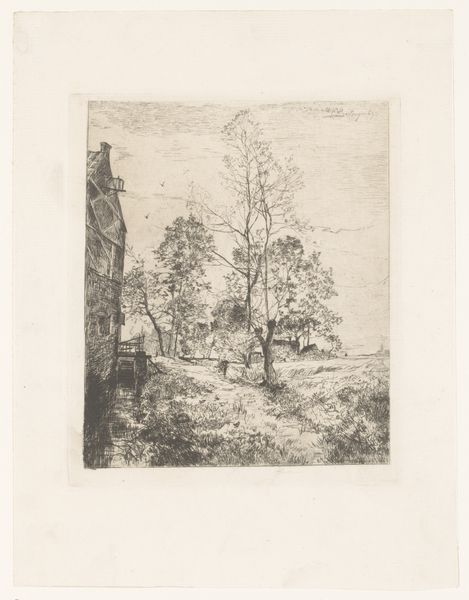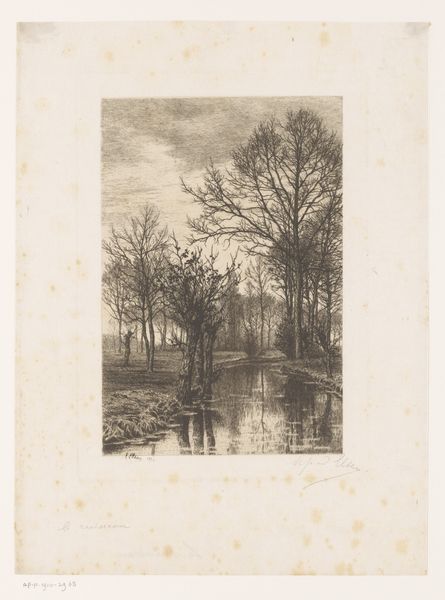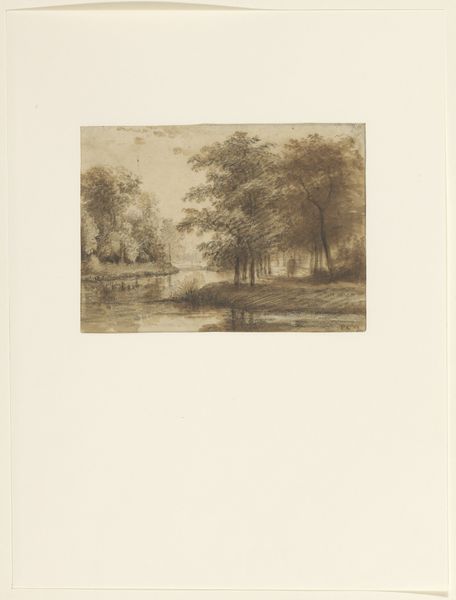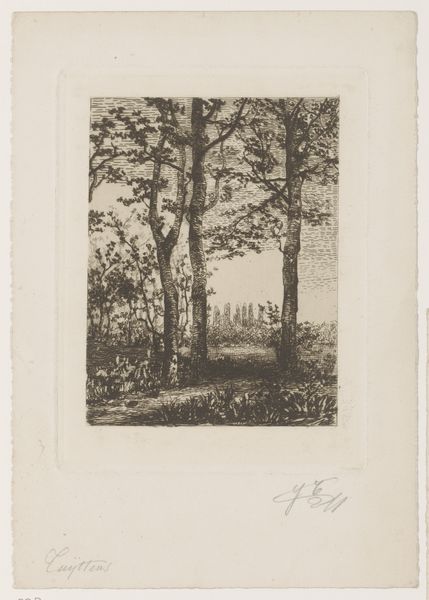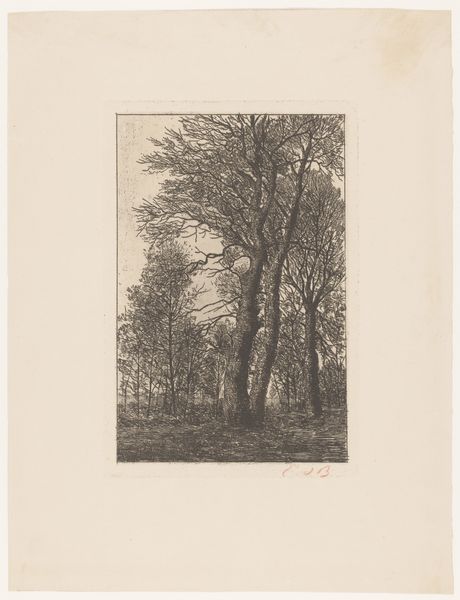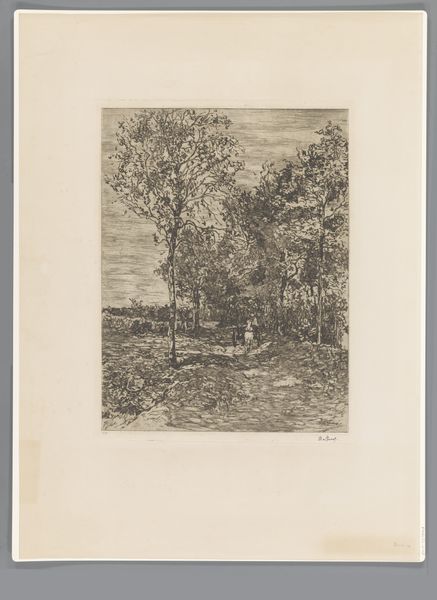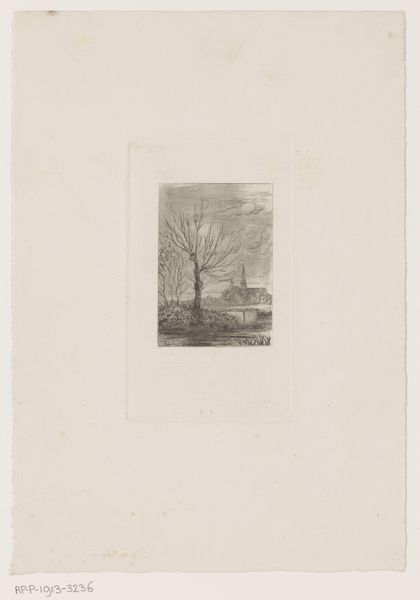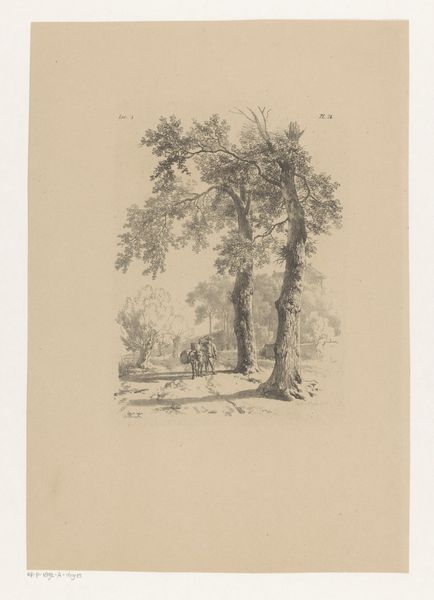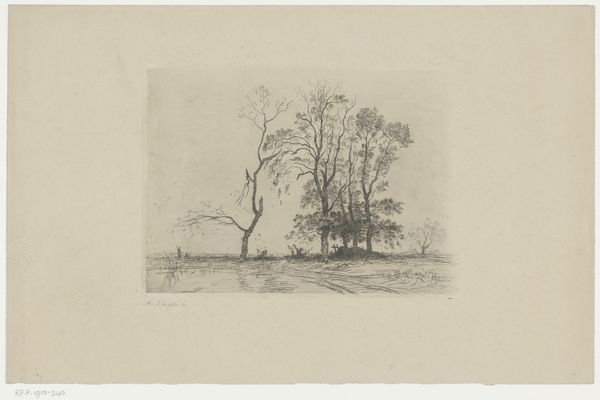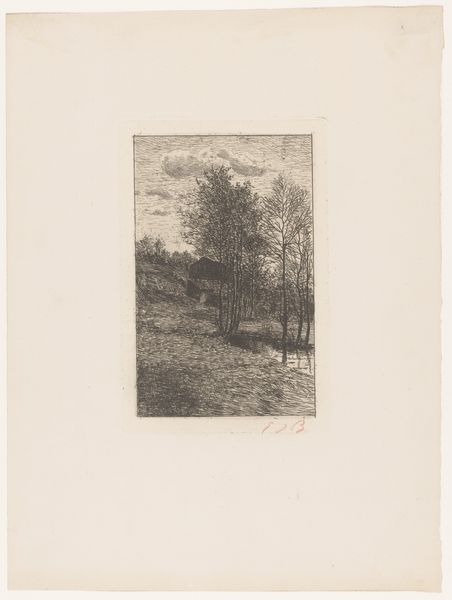
Dimensions: height 249 mm, width 180 mm
Copyright: Rijks Museum: Open Domain
Curator: Here we have Théodore Tscharner’s “Landschap met vrouw aan water,” or "Landscape with woman at water," an etching printed on paper, placing it somewhere between 1836 and 1906. What jumps out at you? Editor: Immediately, I'm drawn to the delicate rendering of the textures. The paper supports a complex interplay of dark and light tones that build atmospheric depth. You can feel the cool dampness clinging to the scene. Curator: It’s interesting that you point out the tangible atmosphere. For me, the figure’s solitary position creates such a poignant sense of inner reflection and isolation. Editor: Exactly. Think about what etching entails: metal plates, acid baths, meticulous labor. Tscharner harnesses the industrialized process to explore Romantic ideals concerning nature's sublime influence, maybe. Curator: Well, his commitment to detail, and, as you mentioned, labor, allows for this lovely depiction of a simple interaction, this brief communion between human and landscape. It echoes a yearning that transcends social restraints. I think the limited palette focuses one’s awareness to nature itself, to its enduring essence, really. Editor: Do you think Tscharner would have welcomed viewers emphasizing the printmaking involved? How his technique serves that deeper connection is also really present. The social context of accessing nature at the end of the 19th century could open an interesting investigation... Curator: You raise a crucial point, the democratization of art and appreciation of the nature, afforded, in part, by more accessible artistic mediums such as prints. This etching then, not only *shows* an interaction, but provides one, invites one. I feel a part of her, observing along the lake. Editor: And because the etching process, through multiplication, potentially allows more people to see that communion, even own it. It transforms that singular moment. I’ll think more on it, but now I can really see the beauty that comes from merging labor with artistic creation and appreciation of art's dissemination and reception. Curator: And I, thinking of our woman’s communion with nature, recognize that artistic acts are also inherently collaborative engagements—between artist, material, viewer, even critic.
Comments
No comments
Be the first to comment and join the conversation on the ultimate creative platform.
